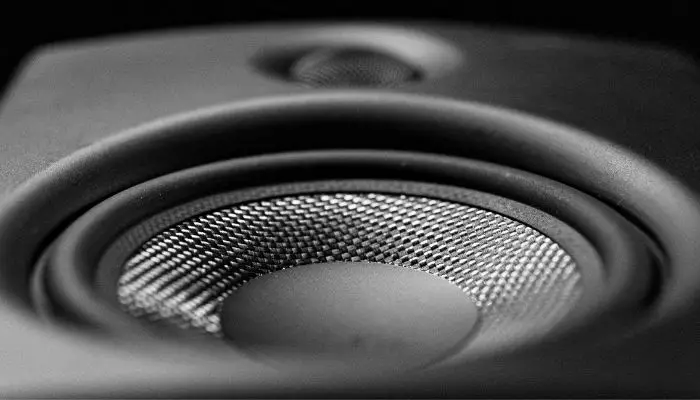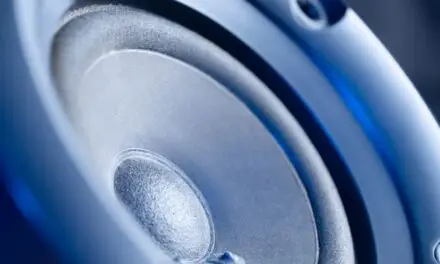A subwoofer can make or break your entire entertainment system—making it one of the most important components in your movie or music-listening experience. For those who understand little about subwoofers, the technology inside a mostly empty box may not seem like much.
However, everything inside that cone is a carefully assembled component and if anything goes wrong, the whole experience fails. For those who see a subwoofer sitting in the corner of a garage sale, unused and layered in dust, it’s easy to think those components would have bitten the dust long ago.
A subwoofer is just like any other electrical device in that it will age over time. However, the components in a subwoofer degrade as the subwoofer is used, with the primary failures centered on the resistors and capacitors.
Table of Contents
Can A Subwoofer Go Bad From Sitting?

If a Subwoofer is sitting in a warm, moist environment, the top and bottom plates, along with the magnetic gap may go bad, along with the coil and any binding glue. If stored in a non-extreme environment, however, a sub shouldn’t degrade over time.
The problem is, when most people want something put out of the way, it goes in a storage shed or in a garage. Since most garages aren’t environmentally controlled, the components inside the sub are exposed.
A sub is typically a device of extremes, meaning that it either works or it doesn’t—when it comes to aging. You can damage a sub in all sorts of ways and still get some degree of functionality out of it.
But an old sub that’s been kept in a cool, dry place, should be just as effective and useful as it was the day it went into storage.
If you stored the sub face up there’s a possibility the suspension may have sagged or dust may have found its way in.
If it’s the case of a little dust, just try giving the cones a gentle tap and they should come back to life. The worst-case scenario would be the box got messed up from moisture.
How Do You Tell If Your Sub Is Going Bad From Sitting?
A sub that’s been sitting in a humid environment and open to rust or the degradation of binding glues then you will likely experience a background, rattling sound as the components that operate under low frequency are no longer 100% capable.
If the sub was stored correctly and it’s making annoying sounds when it’s fired up for the first time in a long time, there is probably physical damage to the box. A sub that’s been stored correctly won’t go bad, so if it rattles, it was probably roughly stored, knocked around, or dropped.
The worst-case scenario is a degree of sagging from the coil but that won’t cause rattling. Dust can be problematic but only if it found its way down into the cone or into the cable connections. If you know enough to access the coil or spider, that’s the first thing you should test, as the glue may have degraded over time.
Related Article: Will A Cracked Subwoofer Still Work? (And How To Fix It)
What Causes A Subwoofer To Go Bad?
Moisture, extreme temperatures, or excessive dust could cause a subwoofer to go bad. If a sub is being stored in a place where moisture is getting at it, the enclosure box may begin to swell and degrade over time.
Continued dampness can also cause metallic parts to rust and the sub’s paper cones to tear and disfigure. Freezing moisture may cause even further damage to the sub and the excessive heat can cause the voice coil to break down or bonded surfaces to start coming apart.
But in terms of just sitting around, unused for a couple of years, nothing should cause it to go bad outside of an unhealthy environment. As we mentioned above, one of the first things you should check is the coil. Binding glue may degrade over time and it’s something you can fix.
You can easily check to see if the spider has separated from the cone by pushing down on the spider just behind the cone. Where the cylinder slides over the small side of the cone, you will see it sliding back and forth freely. It shouldn’t do this and you need a good binding agent to reseal it.
The piece that should bind to the back of the cone is the spot where all the tinsel leads are running from the spider. This is one spot on the sub where a good amount of binding glues are used and it’s the most vulnerable to degrading over time.
How Long Is A Subwoofer OK To Sit For?
A subwoofer is good to sit for years, upwards of 15 to 20 years, or even longer if it is well maintained and stored in a cool, dry environment.
Where it is stored is paramount. If you see a used sub being sold at something like a garage sale, Facebook Marketplace, or something similar, it’s important to find out where it was stored. It’s a more important question than “how long” it was stored.
If you learn that it was stored in a garage, the “how long” part now becomes the most important piece of information. The first thing to go in a humid, warm environment is usually the binding agents, then the metal.
Fortunately, it’s an easy thing to look over if you can access the box before you make the purchase.
Conclusion
If you’re buying a used sub that’s been sitting for a long time, there is no reason to freak out over how long it sat. It’s more important to find out where it was sitting all this time. If the owner kept it in their bedroom closet, you can breathe a sigh of relief because it’s probably fine.
If it was stored in a shed or a garage, however, be sure to look the sub over with a fine-tooth comb before you commit to the purchase.



